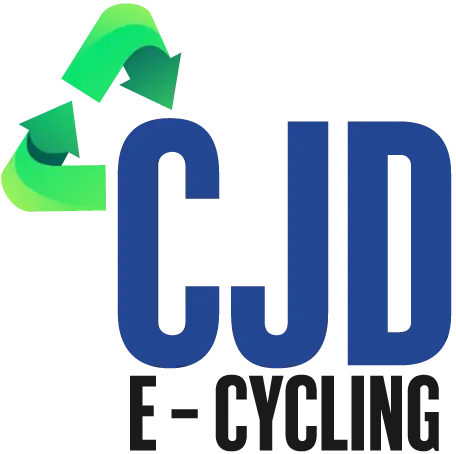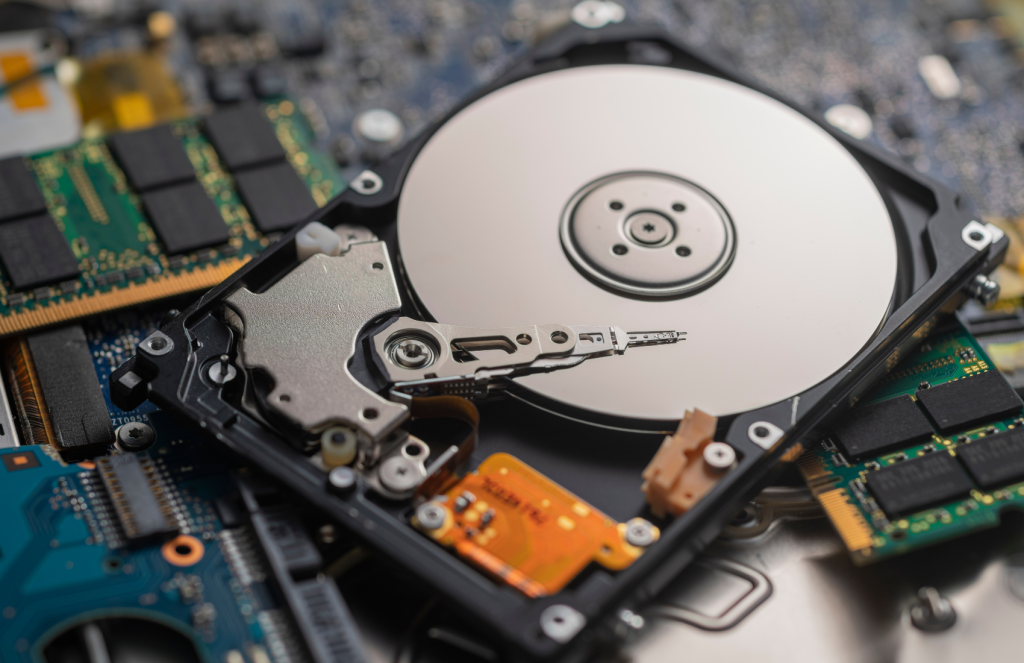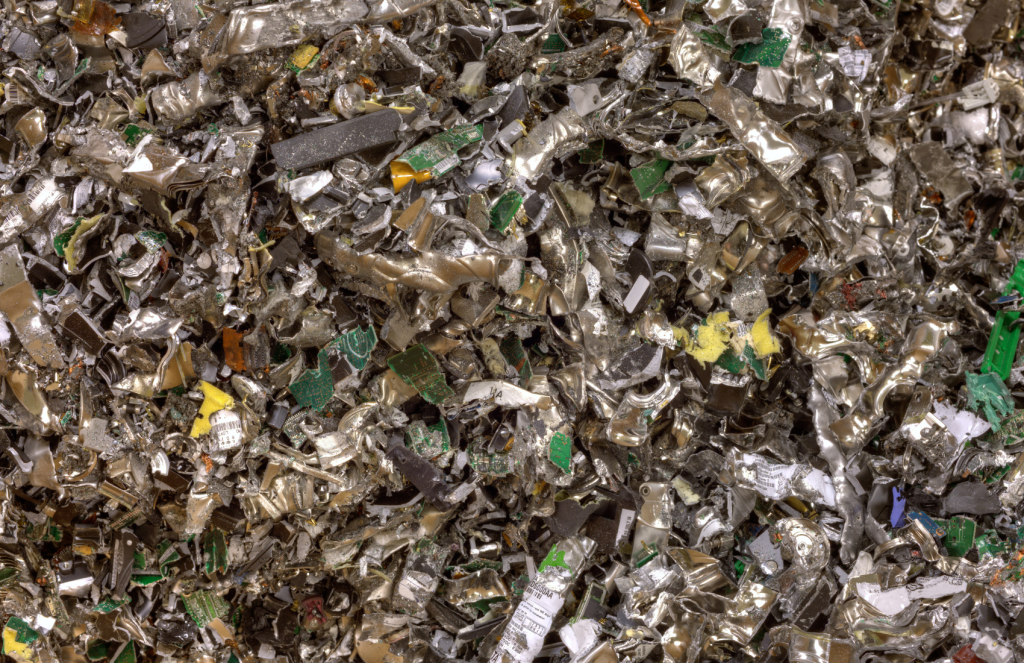Why Secure E-Waste Destruction Matters: Protecting Your Business Data and the Environment
In an era where data breaches cost businesses an average of $4.45 million per incident and e-waste is the fastest-growing waste stream globally, the proper disposal of electronic devices has never been more critical. At CJD E-Cycling, we’ve seen firsthand how inadequate e-waste management can expose organizations to significant risks—both in terms of data security and environmental impact.
The Hidden Dangers in Your Discarded Devices
When your organization replaces computers, servers, phones, or other IT assets, what happens to the old equipment? If you’re simply tossing devices into dumpsters or sending them to standard recyclers without proper data sanitization, you’re essentially putting your sensitive information up for grabs.
We’ve recovered countless hard drives from local landfills and generic recycling centers that still contained recoverable data—everything from personal emails and financial records to proprietary business information and customer databases. In one particularly alarming case, we acquired second-hand hard drives through a public auction that contained intact medical records from a healthcare provider, a clear HIPAA violation that could have resulted in millions in fines.
Beyond data security concerns, improper e-waste disposal contributes to serious environmental hazards. Electronics contain toxic substances including lead, mercury, cadmium, and flame retardants that can leach into soil and water supplies when improperly discarded. A single improperly disposed computer monitor can contaminate 80,000 liters of water.
What Makes E-Waste Destruction Truly Secure?
Secure e-waste destruction goes far beyond simply deleting files or even formatting a hard drive. These methods leave data vulnerable to recovery using readily available software tools. True secure destruction requires a comprehensive approach:
Physical Destruction
For storage devices containing sensitive information, physical destruction is the only foolproof method. This involves specialized equipment that shreds, crushes, or degausses storage media, rendering data completely unrecoverable. At CJD E-Cycling, our industrial shredders reduce hard drives to fragments smaller than a quarter-inch—pieces too small for even the most sophisticated data recovery techniques.
Certified Data Wiping
For equipment that can be refurbished or reused, we employ certified data wiping protocols that exceed Department of Defense standards. This multi-pass process overwrites every sector of the storage device multiple times with random patterns of data, ensuring that original information cannot be recovered.
Documented Chain of Custody
Security isn’t just about destruction methods—it’s about process integrity. A proper secure IT asset disposal program maintains an unbroken chain of custody from the moment devices leave your possession until their ultimate destruction or recycling. This includes secure transport in GPS-tracked vehicles, controlled-access facilities, and comprehensive documentation of each step in the process.
Verifiable Results
After destruction, you should receive a Certificate of Destruction that details exactly what was destroyed, when, how, and by whom. This documentation serves as proof of compliance with data protection regulations and may be essential in the event of an audit.
The Business Case for Secure IT Asset Disposal
In our 15 years working with businesses across industries, we’ve identified four primary benefits that organizations gain from implementing proper secure IT asset disposal:
1. Risk Mitigation
Data breaches from improperly disposed IT assets are entirely preventable. By investing in secure e-waste destruction, you eliminate a significant vulnerability in your security posture. Consider this: while sophisticated cyber attacks get headlines, physical data theft from discarded devices remains one of the easiest and most overlooked attack vectors.
2. Regulatory Compliance
Depending on your industry, you may be subject to regulations like HIPAA, GDPR, CCPA, GLBA, or SOX—all of which include requirements for proper data disposal. Penalties for non-compliance can be severe. Under GDPR, for example, violations can result in fines of up to 4% of global annual revenue. Secure IT asset disposal isn’t just good practice—it’s often a legal requirement.
3. Environmental Stewardship
E-waste contains valuable recoverable materials—including gold, silver, copper, and rare earth elements—that can be reclaimed through proper recycling. When you partner with a certified e-waste recycler like CJD E-Cycling, you ensure that these materials re-enter the supply chain rather than contaminating the environment. Our customers frequently highlight the positive environmental impact in their corporate sustainability reports.
4. Return on Investment
Many organizations are surprised to learn that proper IT asset disposal can actually generate returns. Through our asset recovery programs, we’re often able to provide credit for equipment with residual value, offsetting the costs of secure destruction services. In some cases, particularly with larger refreshes of relatively recent equipment, this can result in a net financial gain.
The CJD E-Cycling Approach to Secure E-Waste Destruction
Our secure destruction process has been refined through thousands of projects with organizations ranging from small businesses to Fortune 500 enterprises:
- Initial Consultation: We work with you to understand your specific security requirements, compliance needs, and volume of materials.
- Secure Collection: Our bonded and background-checked technicians arrive in GPS-tracked vehicles with tamper-evident containers for your equipment.
- Inventory and Assessment: Each item is cataloged with make, model, and serial number in our secure processing facility.
- Data Sanitization or Destruction: Depending on your requirements, devices either undergo certified data wiping or physical destruction.
- Material Recycling: Components are separated and processed through our R2-certified recycling lines, recovering valuable materials and properly handling hazardous substances.
- Documentation: You receive comprehensive destruction certificates and environmental impact reports detailing the materials recovered and environmental benefits.
Finding the Right Secure E-Waste Partner
Whether you choose CJD E-Cycling or another provider, here are the critical factors to consider when selecting a secure IT asset disposal partner:
Certifications Matter
Look for providers with recognized industry certifications such as R2 (Responsible Recycling), e-Stewards, NAID AAA, or ISO 27001. These certifications verify that the company follows standardized best practices for security and environmental responsibility.
Verify Physical Security
Visit the facility where your equipment will be processed. Secure facilities should have controlled access, surveillance systems, security personnel, and segregated processing areas for data-bearing devices.
Inspect the Equipment
The provider should have commercial-grade equipment specifically designed for secure destruction, not repurposed or makeshift solutions. For hard drive destruction, industrial shredders should reduce media to fragments no larger than a quarter-inch.
Check References
Speak with other clients, particularly those in your industry, about their experiences. A reputable provider will be happy to provide references from satisfied customers.
Review Documentation
Sample certificates of destruction should be detailed and specific, not vague attestations. Similarly, environmental impact reports should provide quantifiable metrics about materials recovered and environmental benefits.
The Environmental Impact: Beyond Data Security
While security concerns often drive the decision to implement secure e-waste destruction, the environmental benefits are equally significant:
- A typical desktop computer contains approximately 5-8 pounds of recoverable metals, including copper, aluminum, gold, and silver.
- For every million cell phones recycled, 35,000 pounds of copper, 772 pounds of silver, 75 pounds of gold, and 33 pounds of palladium can be recovered.
- Recycling one million laptops saves the energy equivalent to the electricity used by 3,500 homes in a year.
By choosing secure and environmentally responsible e-waste destruction, your organization contributes to the circular economy, reducing the need for environmentally destructive mining operations and keeping toxic materials out of landfills and incinerators.
Taking the Next Step
In today’s data-driven business environment, secure e-waste destruction isn’t just an IT issue—it’s a critical component of your overall risk management and corporate responsibility strategy. As devices proliferate and regulations tighten, organizations that implement comprehensive secure IT asset disposal programs position themselves for success on multiple fronts: security, compliance, sustainability, and cost-effectiveness.
We invite you to evaluate your current approach to disposing of electronic devices and consider whether it truly addresses the risks involved. If you’re uncertain or concerned about any aspect of your process, our team at CJD E-Cycling is ready to help assess your needs and develop a solution tailored to your specific requirements.
Don’t let your discarded devices become your biggest security vulnerability. Contact CJD E-Cycling today to learn more about our secure e-waste destruction and IT asset disposal services.
CJD E-Cycling is an R2-certified electronics recycler specializing in secure data destruction and environmentally responsible e-waste management. With facilities across the Midwest, we serve organizations of all sizes with customized solutions for their IT asset disposal needs.


